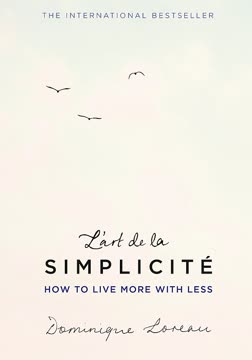Key Takeaways
1. Simplicity Unlocks a Richer Life
Simplicity is beautiful because it brings hidden joys.
Beyond Materialism. In a world obsessed with excess, "L'art de la Simplicité" argues that true fulfillment lies in embracing simplicity. This isn't about deprivation, but about consciously choosing what truly enriches your life, freeing up time and energy for experiences and relationships. It's a shift from quantity to quality, from external validation to internal peace.
Redefining Value. The book challenges the notion that luxury and opulence equate to happiness. Instead, it suggests that simplicity allows us to appreciate the bare necessities, the quintessence of things. This can lead to a deeper understanding of what truly matters, fostering gratitude and contentment.
Practical Application. The art of simplicity involves decluttering your physical space, streamlining your commitments, and cultivating a mindful approach to consumption. By possessing less, you create space for more meaningful experiences, fostering a life rich in joy and purpose.
2. Possessions Can Possess You
We do not possess things. We are possessed by things.
The Burden of Stuff. The book warns against the trap of materialism, where the pursuit of possessions becomes an end in itself. It argues that accumulating excessive amounts of baggage, both physical and mental, can lead to a sense of being weighed down, hindering personal growth and freedom.
Attachment and Identity. Many people unconsciously associate their self-worth with their material wealth, seeking validation through possessions. This creates a cycle of constant acquisition, leading to dissatisfaction and a feeling of being controlled by external objects.
Breaking Free. To escape this cycle, the book advocates for a conscious effort to detach from material possessions. This involves questioning the need for each item, decluttering your space, and focusing on experiences and relationships rather than material goods.
3. Minimalism Requires Courage and Clarity
Minimalism requires an ordered lifestyle and careful attention to detail.
Making Difficult Choices. Embracing minimalism isn't simply about throwing things away; it's about making conscious choices about what to keep and what to let go. This requires courage to confront attachments to the past and clarity in envisioning the future.
Discipline and Determination. Living with less demands discipline and a commitment to resisting the allure of consumerism. It's about creating a life of intention, where every object and activity serves a purpose and contributes to overall well-being.
The Rewards of Less. Despite the challenges, minimalism offers significant rewards, including increased freedom, reduced stress, and a greater appreciation for the things that truly matter. It's a path towards a more intentional and fulfilling life.
4. Home as a Stress-Free Sanctuary
A home furnished with nothing but a handful of beautiful, absolutely essential things is a haven of peace.
Beyond Decoration. The book emphasizes that a home should be more than just a decorated space; it should be a sanctuary, a place of rest, inspiration, and healing. This requires creating an environment free from clutter and distractions, allowing for a sense of calm and serenity.
Fluidity and Versatility. A minimalist home is characterized by its fluidity and versatility, allowing for ease of movement and adaptability. This involves choosing lightweight, functional furniture and eliminating unnecessary items that clutter the space.
The Power of Empty Space. Empty space is not a void, but a source of positive energy and inspiration. It allows for natural light to fill the room, creating a sense of openness and freedom. In a minimalist interior, every object becomes a work of art, and every moment becomes a treasure.
5. Style is Innate, Fashion is Bought
Fashion changes, but style endures.
Beyond Trends. The book distinguishes between fashion, which is fleeting and trend-driven, and style, which is timeless and reflects inner thoughts. True personal style is about simplicity, beauty, and elegance, a perfect marriage of what we wear and what we are.
The Essence of Elegance. An elegant woman avoids the "Christmas tree" look, opting for simple, well-cut ensembles accessorized with a few fine pieces of jewelry. Color palettes are limited, often focusing on neutral shades like beige, gray, white, and black.
A Wardrobe of Intention. A minimalist wardrobe is curated with intention, consisting of classic pieces that can be mixed and matched for various occasions. This eliminates the stress of choosing what to wear and promotes a sense of effortless style.
6. Time is Your Most Precious Possession
A day of life is more precious than ten thousand pieces of gold … People who hate death should love life.
The Sacred Present. The book emphasizes the importance of living in the present moment, recognizing that each new day is a gift. It cautions against dwelling on the past or worrying about the future, urging readers to take advantage of the present and cultivate mindfulness.
The Luxury of Idleness. Idleness, when savored and appreciated, can be a source of great happiness. It's about cultivating the habit of losing yourself in your own thoughts, a precious gift that brings peace and contentment.
Ritualizing the Everyday. Simple actions like eating, conversing, or cleaning can be transformed into rituals, adding meaning and significance to everyday life. These rituals bring comfort and structure, enriching our world and opening up new dimensions of experience.
7. Money Should Serve, Not Rule
When money is plentiful, it’s a man’s world. When it is scarce, it’s a woman’s world.
Money as Energy. The book views money as a form of energy that should circulate freely in our lives. It encourages readers to understand the influence of money on various aspects of their lives, from nature and ideas to pleasure and self-respect.
Making Money Your Slave. Instead of being controlled by money, the book advocates for making it your servant. This involves economizing, spending within your means, and saving for security and serenity. It's about taking control of your finances and avoiding the trap of debt.
The Price of Disorder. Disorder in our lives often translates to financial waste. By simplifying our possessions and managing our finances effectively, we can avoid unnecessary expenses and create a more secure and fulfilling life.
8. Beauty is a Fundamental Need
If from all your wealth, Two meager loaves remain, Sell one, and with your gains, Buy hyacinths to feed your soul.
Beyond Materialism. The book argues that beauty is not a luxury, but a fundamental need for the human soul. It's as essential as air, water, and food, and without it, we become sad, depressed, and even deranged.
Aesthetics and Ethics. The Japanese embrace beauty as a way of preserving their love of life. True luxury is defined as a condition we feel naturally comfortable with, almost without noticing, while false luxury is ostentatious and often leads to discomfort and dissatisfaction.
Living Elegantly. Doing everything with style brings an infinitely richer life. This means paying attention to details, using your finest things every day, and creating a beautiful and harmonious environment.
9. Cleanliness is an Ethical Imperative
Shining cleanliness, the perfect order … that spotless and sweet-smelling kitchen … All the tranquillity of my life depends upon [the housekeeper’s work, which is] in itself a satisfaction, a pride.
Beyond Hygiene. The book elevates cleanliness beyond mere hygiene, presenting it as an ethical and spiritual practice. In the Zen tradition, housework and cleaning are seen as contemplative exercises, a means of "setting the spirit in order."
Housework as Contemplation. Buddhist monks and nuns accomplish housework, cleaning, and gardening as contemplative exercises in their own right. They respect and care for their surroundings, because they know this world has given them life.
Frugality and Order. Frugality, cleanliness, and tidiness are interconnected virtues. Creating an ordered environment orders our inner selves, reaffirming our sense of control over our lives.
10. The Body as a Temple: Care and Discipline
A jade vase is made by repeated polishing.
Beyond Physicality. The book emphasizes that taking care of your body is not just about physical appearance, but about setting it free to support intellectual activity and the things of the spirit. It's about creating a body that doesn't burden the mind.
Rediscovering Moderation. The book advocates for moderation and discipline in all aspects of physical care, from diet and exercise to cleansing rituals and grooming. It's about finding the right approach to keeping ourselves supple, cleansed, clean, and disciplined.
The Body's Needs. Our bodies have clearly defined needs, and if we overstep those boundaries, it becomes more and more difficult to contain our cravings. Neglecting our bodies can have serious consequences, impacting our health, energy, and overall well-being.
11. Inner Ecology: Cultivating a Serene Mind
Only let the troubled waters be calm, and the sun and moon will be reflected on the surface of your being.
Beyond Physical Health. The book emphasizes that true well-being extends beyond physical health to encompass the cultivation of a serene and balanced mind. This involves eliminating negative thoughts, managing stress, and fostering a positive attitude.
The Power of Thought. Our thoughts have a profound impact on our lives, shaping our experiences and influencing our well-being. By consciously choosing positive and constructive thoughts, we can create a more harmonious and fulfilling existence.
Mindfulness and Meditation. Mindfulness and meditation are presented as powerful tools for clearing the mind, developing concentration, and achieving inner peace. These practices allow us to connect with our inner selves and cultivate a greater sense of awareness and presence.
12. Self-Knowledge Through Solitude and Reflection
It is absurd to ignore oneself when we want to know everything.
The Importance of Self-Care. The book emphasizes the importance of taking care of ourselves, making friends with ourselves, and respecting ourselves. This involves constant self-questioning, renunciation, discipline, and restraint.
The Art of Living Alone. Solitude is not to be feared, but embraced as a privilege and an essential condition for self-advancement. It allows us to connect with our inner selves, recover our energies, and cultivate a deeper understanding of who we are.
The Diamond Inside. We are all like rough diamonds, and the more we polish and shape ourselves, the more we sparkle and the more others are attracted to what they see. This involves a lifelong commitment to self-improvement, seeking knowledge, cultivating beauty, and living with intention.
Last updated:
FAQ
1. What is "L'art de la Simplicité" by Dominique Loreau about?
- Philosophy of Simplicity: The book explores the art of living simply, drawing on Japanese Zen principles and the author's personal experiences in Japan.
- Holistic Approach: It covers material minimalism, self-care, mindful living, and the cultivation of beauty and order in all aspects of life.
- Practical Guidance: Loreau provides actionable advice on decluttering, organizing, and refining one’s home, body, and mind.
- East Meets West: The book blends Eastern philosophies with Western lifestyles, encouraging readers to find fulfillment through less rather than more.
2. Why should I read "L'art de la Simplicité" by Dominique Loreau?
- Reduce Overwhelm: The book offers strategies to combat the stress and chaos of modern, consumer-driven life.
- Enhance Well-being: Loreau’s methods promise greater peace, clarity, and happiness by focusing on essentials and letting go of excess.
- Timeless Wisdom: It draws on centuries-old philosophies, making its lessons relevant across cultures and eras.
- Practical and Inspirational: Readers receive both philosophical insights and concrete steps to simplify their homes, routines, and thoughts.
3. What are the key takeaways from "L'art de la Simplicité"?
- Less is More: True freedom and happiness come from owning and desiring less, not more.
- Simplicity as a Lifestyle: Minimalism is not just about decluttering, but about cultivating beauty, order, and mindfulness in every area of life.
- Self-Care is Essential: Taking care of your body, mind, and spirit is a foundation for a fulfilling life.
- Rituals and Mindfulness: Everyday actions, when performed with intention and care, can become sources of joy and meaning.
4. How does Dominique Loreau define and practice minimalism in "L'art de la Simplicité"?
- Material Minimalism: Loreau advocates for owning only what is essential, beautiful, and functional, and regularly evaluating possessions for their true value.
- Spiritual and Mental Minimalism: She emphasizes decluttering the mind by letting go of negative thoughts, anxieties, and unnecessary mental baggage.
- Aesthetic Minimalism: The book encourages creating harmonious, uncluttered spaces that nurture the senses and spirit.
- Practical Minimalism: Loreau provides tips for simplifying wardrobes, homes, and daily routines, making minimalism accessible and actionable.
5. What are Dominique Loreau’s main methods for decluttering and organizing the home?
- Eliminate the Nonessential: Regularly assess belongings and remove anything that is not useful, beautiful, or loved.
- Create Space and Light: Prioritize empty space, natural light, and order over decoration and accumulation.
- Functional Storage: Design storage solutions that are practical and keep items close to where they are used.
- Maintenance Rituals: Keep the home clean and tidy as a daily practice, turning housework into a mindful, satisfying ritual.
6. How does "L'art de la Simplicité" address the relationship between material possessions and personal well-being?
- Possessions as Burdens: Loreau argues that excess possessions drain energy, time, and focus, leading to stress and dissatisfaction.
- Freedom Through Letting Go: Releasing attachment to things brings a sense of liberation and clarity.
- Quality Over Quantity: She recommends investing in fewer, higher-quality items that age well and bring lasting satisfaction.
- Home as Sanctuary: A simplified, harmonious environment supports mental and emotional health.
7. What advice does Dominique Loreau give for cultivating personal style and a minimalist wardrobe?
- Classic, Versatile Pieces: Build a wardrobe of timeless, well-made clothing in neutral colors that can be mixed and matched.
- Quality and Fit: Choose fewer items of higher quality that fit well and make you feel confident.
- Declutter Regularly: Remove clothes that are worn out, ill-fitting, or no longer suit your style or needs.
- Wardrobe as Self-Expression: Let your clothing reflect your true self, not fleeting trends or external expectations.
8. How does "L'art de la Simplicité" connect simplicity with beauty and aesthetics?
- Beauty as a Need: Loreau believes beauty is essential for the soul, just as food is for the body.
- Wabi-Sabi and Zen: She draws on Japanese concepts like wabi-sabi, finding beauty in imperfection, simplicity, and natural materials.
- Harmony and Order: Aesthetic pleasure arises from harmonious arrangements, empty space, and attention to detail.
- Everyday Elegance: Even mundane tasks and objects can be elevated through care, mindfulness, and refined taste.
9. What are the key practices for self-care and body care in "L'art de la Simplicité"?
- Minimalist Beauty Routines: Use fewer, high-quality products and natural ingredients for skin, hair, and nails.
- Daily Rituals: Incorporate simple, enjoyable rituals like bathing, body brushing, and gentle exercise.
- Healthy Eating: Eat less but better, focusing on fresh, unprocessed foods and mindful eating habits.
- Respect for the Body: Treat the body as a temple, maintaining cleanliness, grooming, and physical health as acts of self-respect.
10. How does Dominique Loreau recommend simplifying time management and daily routines?
- Prioritize the Present: Focus on the quality of each moment rather than rushing or multitasking.
- Ritualize Tasks: Turn daily activities into meaningful rituals to bring order and satisfaction.
- Eliminate the Unnecessary: Reduce commitments, say no gracefully, and avoid over-scheduling.
- Plan and Prepare: Use lists, schedules, and routines to create structure and free up mental space.
11. What role does mindfulness and meditation play in "L'art de la Simplicité"?
- Mindful Living: Loreau encourages full attention to the present, whether in chores, eating, or self-care.
- Meditation Practice: She advocates for regular meditation to clear the mind, reduce anxiety, and cultivate inner peace.
- Rituals for Awareness: Everyday rituals, when performed mindfully, become opportunities for reflection and self-knowledge.
- Mental Decluttering: Letting go of negative thoughts and focusing on essentials is as important as physical decluttering.
12. What are the most memorable quotes from "L'art de la Simplicité" and what do they mean?
- “A man is rich in proportion to the number of things which he can afford to let alone.” (Thoreau, quoted by Loreau): True wealth is measured by freedom from unnecessary possessions and desires.
- “If from all your wealth, two meager loaves remain, sell one, and with your gains, buy hyacinths to feed your soul.” (Sadi, quoted by Loreau): Beauty and nourishment for the soul are as vital as material needs.
- “We do not possess things. We are possessed by things.” (Loreau): Our attachments can control us more than we control them.
- “Perfection is not doing exceptional things, but doing ordinary things exceptionally well.” (Japanese proverb): Excellence and fulfillment come from mindful attention to everyday actions.
- “The key to loving how you live is in knowing what it is you truly love.” (Sarah Ban Breathnach, quoted by Loreau): Self-knowledge is the foundation for a life of simplicity and joy.
Review Summary
L'art de la Simplicité receives mixed reviews. Some praise its insights on minimalism and simplicity, finding it inspiring and calming. Others criticize it as repetitive, contradictory, and overly focused on expensive luxury items. Many readers appreciate the book's emphasis on decluttering and mindful living, but some find the advice impractical or pretentious. The book's focus on women and apparent classism are points of contention. Overall, readers tend to enjoy the core message of simplifying life, but opinions vary widely on the execution and specific recommendations.
Similar Books
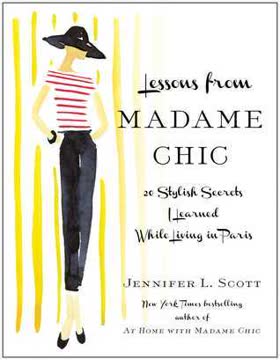

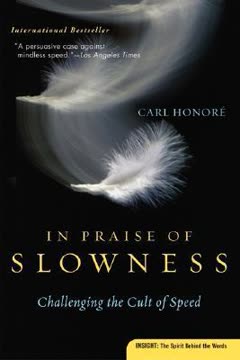
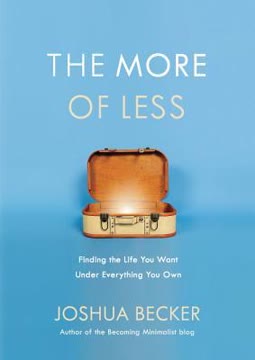
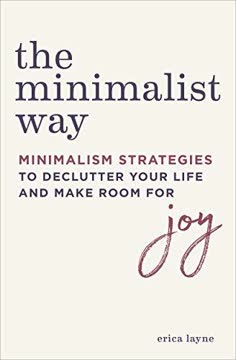
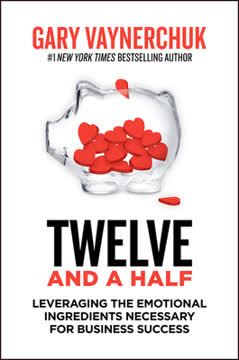
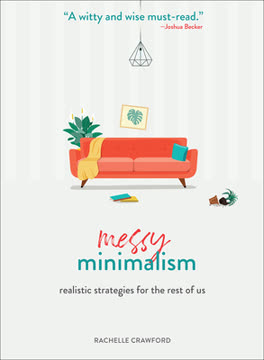

Download PDF
Download EPUB
.epub digital book format is ideal for reading ebooks on phones, tablets, and e-readers.
